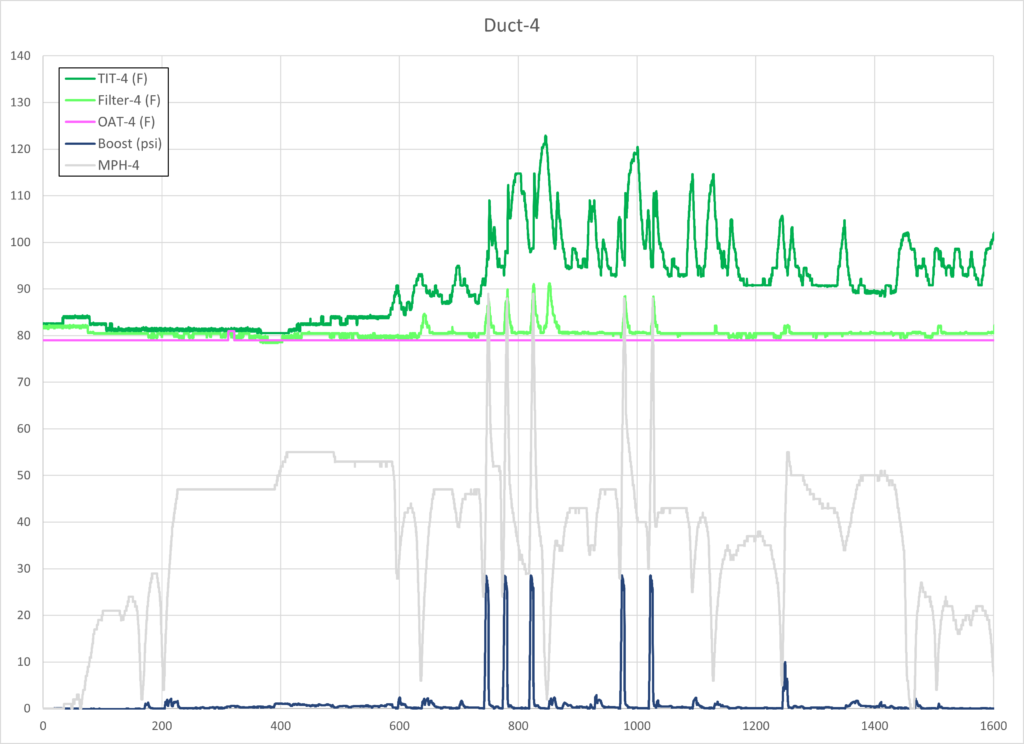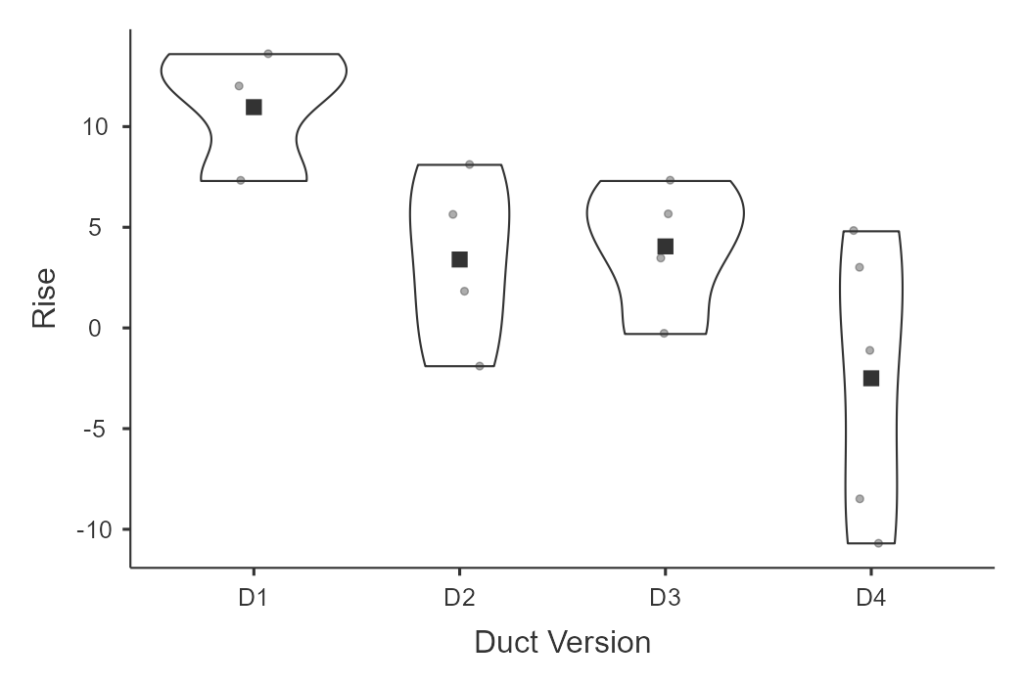Background:
Continuing a look at the pre-turbo air temperature using a CTS open intake that began with modifications of the stock air duct. Here a modification is made to the CTS Turbo intake partition / heat shield.
Several pieces of foam are used to better seal off areas that looked like candidates for air from the engine compartment to be drawn through.

Test Process:
Air temperatures are recorded during two types of drives. The first drive is around town over a route that I regularly drive that includes stops for traffic control devices. This is referred to as the out-and-back drive.
The second drive type is to collect temperature data during full-throttle acceleration. Several full-throttle pulls are made to facilitate comparing the data for trends.
The foam addition to the heat shield is referred to as Duct-4. Air Duct-3 is the same arrangement minus the foam pieces on the heat shield.
Test Results:
The out-and-back temperature using Duct-4, the modified heat shield, versus the unmodified heat shield, Duct-3.

The next chart shows the entire drive during which the acceleration pulls were recorded.

This chart is a close-up of the time period when the acceleration data was recorded.

The next chart shows the trends for the pre-turbocharger air temperature at the beginning of the acceleration pulls.
The squares are the average of the Duct version data points.

The final chart shows the pre-turbocharger air temperature increase during the pull for each duct type.
Again, the square is the average of the data points.

Conclusion:
During routine driving, the addition of the foam pieces did not make a significant difference to the turbo inlet air temperature. When the car is stationary it does show indications of helping keep the air temperature down slightly.
During the full-throttle acceleration, the pulls with the foam inserts had approximately the same starting air temperature as without the foam (Duct-3), which is consistent with the results from the out-and-back drive.
The increase in the air temperature during the pull with Duct-4 is less than with the unmodified heat shield, Duct-3. In some cases, the air temperature entering the turbocharger at the end of the pull was less than what it was at the beginning.
The modification using the foam showed that there is a small improvement that can be made to the performance of the heat shielding of the CTS Turbo intake.

Would be interesting to retest using the front grill scoop thingies
I remember in one of your older tests, it was determined they didn’t do much but would be an awesome opportunity to retest, if U had the time of course.
The thingies in question:https://www.ecstuning.com/b-ecs-parts/mk7-mk75-gti-golf-r-luft-technik-air-inlet-scoop-kit/004373la~dk/?pdk=Bg
I think the duct is unlikely to make any difference under the conditions I’m usually operating the car. There might be some other condition where it makes a difference, perhaps out on a track where the car can reach and sustain very high speeds. For now the tests I have already conducted have me thinking the part isn’t making a significant difference.
Thnx for the explanation